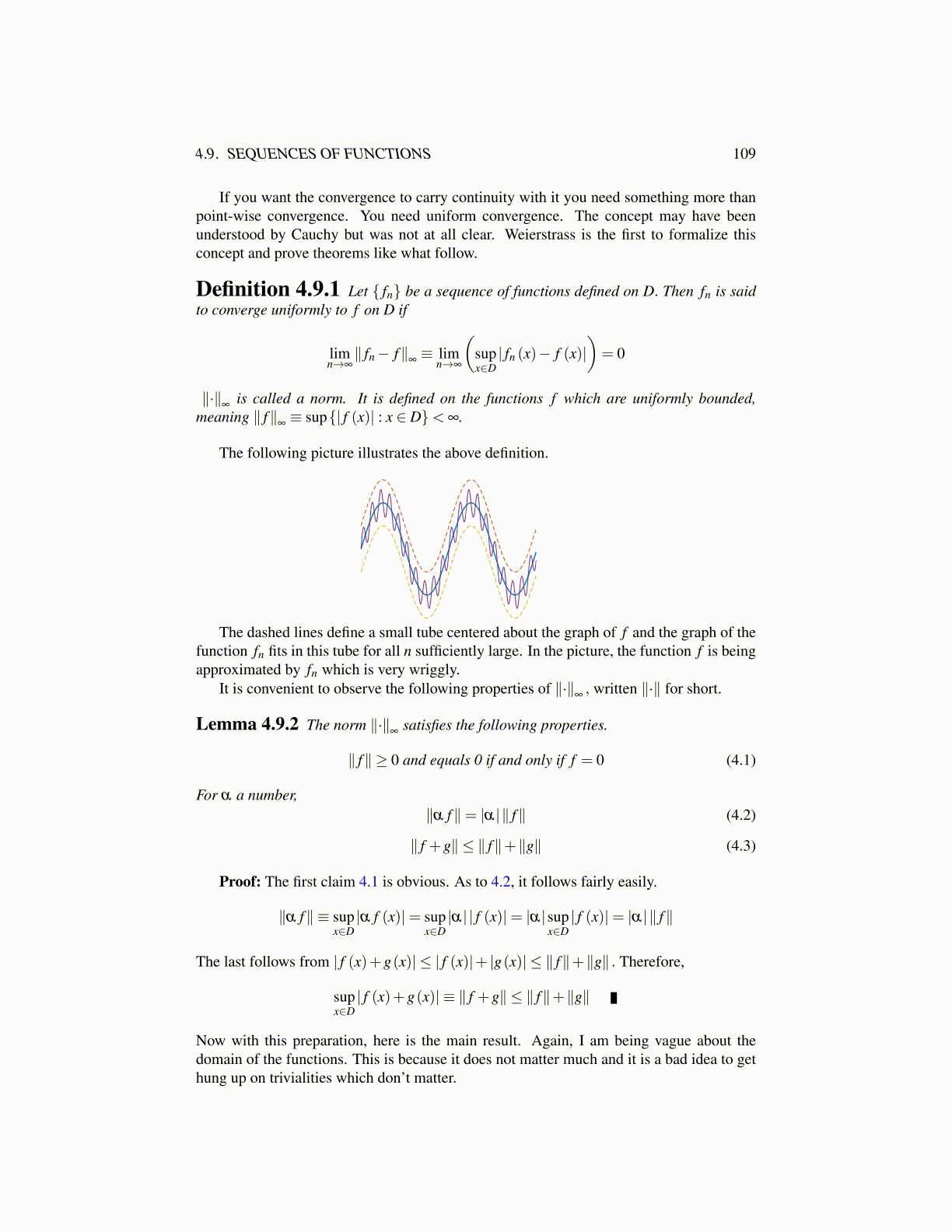
4.9. SEQUENCES OF FUNCTIONS 109
If you want the convergence to carry continuity with it you need something more thanpoint-wise convergence. You need uniform convergence. The concept may have beenunderstood by Cauchy but was not at all clear. Weierstrass is the first to formalize thisconcept and prove theorems like what follow.
Definition 4.9.1 Let { fn} be a sequence of functions defined on D. Then fn is saidto converge uniformly to f on D if
limn→∞
∥ fn − f∥∞≡ lim
n→∞
(supx∈D
| fn (x)− f (x)|)= 0
∥·∥∞
is called a norm. It is defined on the functions f which are uniformly bounded,meaning ∥ f∥
∞≡ sup{| f (x)| : x ∈ D}< ∞.
The following picture illustrates the above definition.
The dashed lines define a small tube centered about the graph of f and the graph of thefunction fn fits in this tube for all n sufficiently large. In the picture, the function f is beingapproximated by fn which is very wriggly.
It is convenient to observe the following properties of ∥·∥∞, written ∥·∥ for short.
Lemma 4.9.2 The norm ∥·∥∞
satisfies the following properties.
∥ f∥ ≥ 0 and equals 0 if and only if f = 0 (4.1)
For α a number,∥α f∥= |α|∥ f∥ (4.2)
∥ f +g∥ ≤ ∥ f∥+∥g∥ (4.3)
Proof: The first claim 4.1 is obvious. As to 4.2, it follows fairly easily.
∥α f∥ ≡ supx∈D
|α f (x)|= supx∈D
|α| | f (x)|= |α|supx∈D
| f (x)|= |α|∥ f∥
The last follows from | f (x)+g(x)| ≤ | f (x)|+ |g(x)| ≤ ∥ f∥+∥g∥ . Therefore,
supx∈D
| f (x)+g(x)| ≡ ∥ f +g∥ ≤ ∥ f∥+∥g∥
Now with this preparation, here is the main result. Again, I am being vague about thedomain of the functions. This is because it does not matter much and it is a bad idea to gethung up on trivialities which don’t matter.